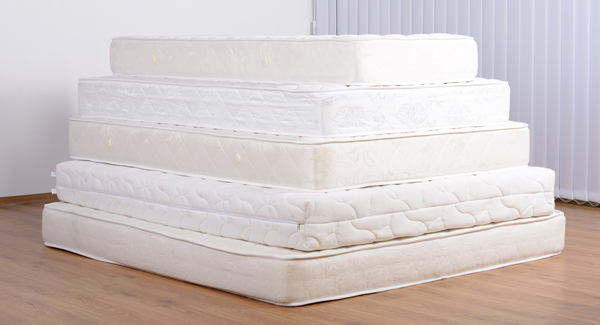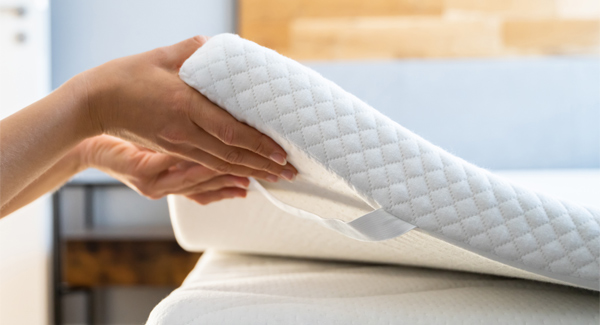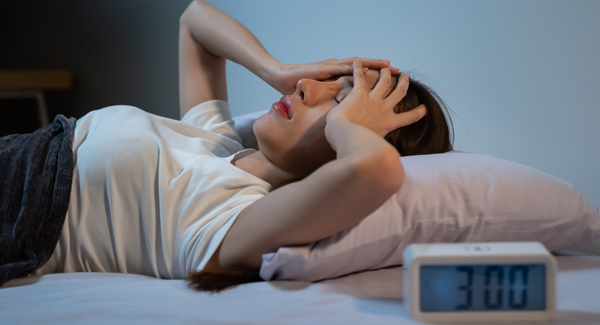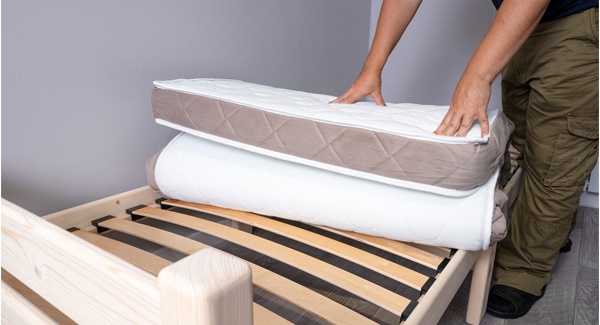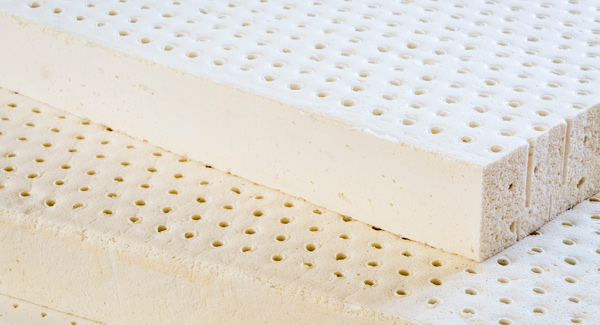Home » Mattress advice » Mattress Thickness: How Thick Should A Mattress Be?
Mattress thickness: How thick should a mattress be?
Article navigation
- Tony Brown
Mattresses nowadays seem to be getting deeper and deeper. It feels like some should come with a step ladder.
Most mattresses tend to be between 10 and 14 inches deep. The thickness of a mattress depends on its construction and isn’t necessarily indicative of its quality. Some higher-quality mattresses can be as little as 8 to 10 inches deep, while cheaper mattresses can sometimes be deeper.
There is a common misconception that the deeper the mattress, the more comfortable it will feel. This isn’t necessarily the case, although anything less than 8 inches deep is unlikely to provide sufficient support for an adult.
Mattresses come with or without springs and are typically layered with various fillings to provide cushioning and comfort. Each mattress will have its own layer combination, and the depth of each layer contributes to the thickness of the mattress.
Filling quantity and quality affect how well a mattress performs. Compact pads are often used in cheaper mattresses. In comparison, copious amounts of loose natural fillings are often used in higher-quality mattresses.
The height of each spring can also affect the thickness of the mattress. Full height springs have several turns in the wire that allow them to be responsive to the sleeper’s weight. The more turns in the wire, the taller the spring is.
Sprung mattresses can be made up of single or multiple layers of springs stacked on top of each other for support. Some mattresses also contain micro or mini springs, which provide an additional comfort layer. In general, the more springs there are in a mattress, the more supportive it will be. So if a mattress is constructed using several layers of springs, it is often deeper and more supportive.
All-foam mattresses are typically multi-layered and made from different densities of foam. Each mattress will have a durable base layer with additional support and comfort layers that sit on top.
Thin mattresses
Thin mattresses are typically less than 8 inches deep. As comfort is compromised, thinner mattresses are generally unsuitable for regular adult use.
Thin mattresses are often used with futons, sofa beds or folding beds so that the mattress can be easily folded and stored away when it is not in use. Trundle beds often come with shallow mattresses, so that one bed can easily fit underneath the other.
Children’s mattresses also tend to be thinner, primarily for safety reasons if the child falls out of bed. Mattress thickness tends to be less important for a child as they weigh less than adults and may not need as thick a mattress to feel suitably supported.
Standard mattresses
Standard mattresses are typically 8 to 12 inches deep and should provide adequate cushioning. The layers tend to be thicker and more conforming, benefiting people who suffer from aches and pains.
Roll-up mattresses often fall into this category so that they can be packed into neat compact packaging and easily transported.
Most mattresses specifically designed for use with an adjustable bed are between 8 and 12 inches deep. This is to allow them to conform to the shape of the adjustable bed when it is operated.
Standard bedding should also fit mattresses up to 12 inches deep, except for adjustable beds where specific sheets are required to move with the bed when operated.
Deep mattresses
Deeper mattresses can be 12 inches deep or more and are typically constructed with thick plush layers that provide greater cushioning. Thicker mattresses appeal to many side sleepers because of the extra cushioning they will feel around the shoulders and hips.
Some deeper mattresses have a hybrid construction with multiple foam layers that sit on top of a spring unit. Similarly, higher-quality mattresses can feature a double or triple layer of springs stacked on top of each other to provide greater support and responsiveness.
Since deeper mattresses typically contain more layers, they tend to be more expensive than other mattresses.
A problem with thicker mattresses is that standard fitted sheets may not fit properly. Although bedding companies have tried to address this, if your mattress is thicker than 12 inches, you may need extra deep or custom made sheets.
It may help to measure the thickness of your mattress before you go out and purchase new bedding.
The manufacturing process
During the manufacturing process, the mattress upholstery is neatly compressed, reducing its thickness, so the actual depth of the mattress may not necessarily reflect the quality. For example, pocket spring mattresses can be packed with high-quality fillings, but once compressed, these mattresses can be relatively shallow, sometimes between 8 and 10 inches deep.
Most mattresses are either tufted or quilted. Quilting involves stitching the cover to the surface fillings to create a smoother, flatter sleeping surface.
In contrast, tufting is often found in higher-quality mattresses. It is a technique that holds the fillings in position by passing tapes or straps through the mattress to create a slightly deeper contoured surface.
Body weight
Your body weight determines how much pressure you apply to the mattress. It plays a significant part in whether the mattress is supporting you correctly. If the mattress is too soft, the body will sink too much into the mattress, putting the spine in an unnatural sleeping position. If the mattress is too firm, this can create tension and pressure points.
Similarly, the thickness of the mattress can impact sleep quality. Two people of differing weights may need different levels of support. A thinner mattress may support a lightweight person weighing under 11 stone. But a much heavier person may not feel adequately supported and ‘bottom out’ on the mattress. Thus a heavier person may find a thicker and firmer mattress more supportive.
Bed height
You will also need to consider the height of the bed when the mattress is paired with the bed base. Bed height is important because it affects how easily you can get in and out of bed. The height of the bed tends to affect older adults or those with mobility issues more.
If the mattress is too deep, this can significantly increase the height of the bed, which may force you to climb on or jump into bed. In contrast, a shallow mattress can make a bed lower, which can put strain on the muscles and joints when you get in and out of bed.
However, a thinner mattress may be more suitable for a child’s bed. Ideally, a child’s mattress should be no more than 8 inches deep. A lower bed is safer if the child falls out of bed. Similarly, a bunk bed mattress needs to be relatively thin to ensure it does not sit above the top of the bed frame.
Also, consider the room aesthetics. A thicker mattress may put the other furniture in the room out of proportion by making the bed too tall for the bedsides or partially hiding the headboard.
Thicker mattresses can be difficult to manoeuvre
Thicker mattresses are often heavy and difficult to move. This could cause problems during delivery, especially in homes with low ceilings, narrow staircases, or tight corners, as thicker mattresses tend to have less flexibility.
Most mattresses need regular turning to help even out the wear. Turning a thicker mattress may require more physical effort, so if you’re considering a new mattress, it may help to consider slimmer models or those that are non-turn.
Final thoughts
As the saying goes, never judge a book by its cover. Just because a mattress is deeper and looks more luxurious doesn’t necessarily mean it will be more comfortable.
While mattresses may look similar, it’s what’s inside that counts. Check the specifications of each mattress to determine its construction, material quality and quantity. The better the construction, the more comfortable, supportive, and durable the mattress will be.
Share this article

About the author
Tony Brown is the founder and creator of The Bed Consultant. His career in the bed industry began in 2002. After graduating from university with a degree in Business Administration, Tony joined one of the largest independent furniture retailers in the UK as a bed consultant. Tony has helped thousands of customers find the perfect mattress.

